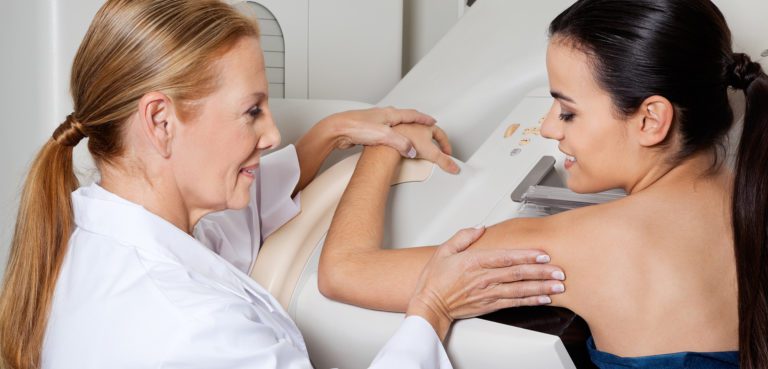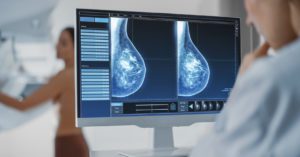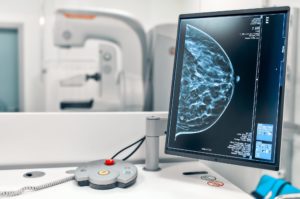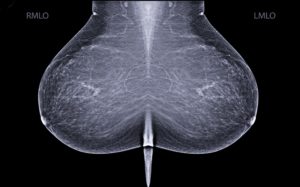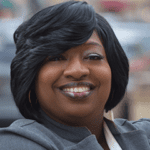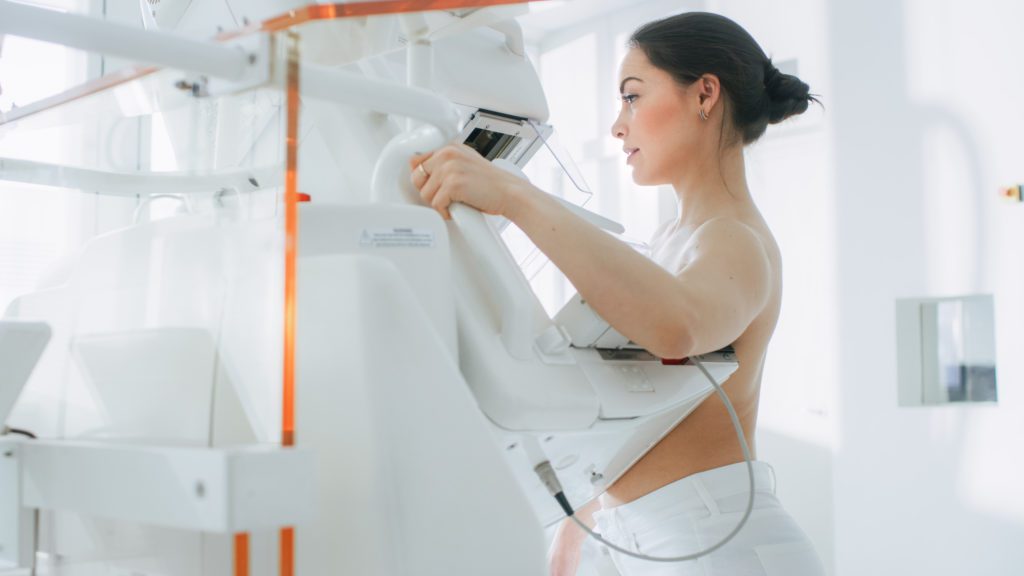The American Cancer Society and the American College of Radiology have developed guidelines shown below. Over 90% of breast cancers can be detected when all three methods are used together in a planned program. The following recommendations are for women who are considered at average risk for developing breast cancer.
AGE 20-24
1. Perform a breast self-exam once a month, 7-10 days after onset of menstruation.
2. Get an initial mammogram at age 40.
3. Get a physical exam at least every 3 years.
AGE 40+
1. Perform a breast self-exam once a month, 7-10 days after onset of menstruation.
2. Get a screening mammogram every year.
3. Get a physical exam every year.
Approximately 50% of women have dense breast tissue. Digital 3D screening mammography is less effective at finding cancers in women with dense breasts as the superimposition of breast tissue can obscure cancers or make normal structures appear suspicious. This reduction in sensitivity and specificity for the detection of breast cancers is more pronounced as breast density increases.
A conventional screening mammogram is the only early cancer detection strategy that has been shown in randomized trials to reduce the chance of death from breast cancer. The American Cancer Society, the National Comprehensive Cancer Network, the American Congress of Obstetricians and Gynecologists, the American College of Radiology and other organizations recommend screening mammography annually for women older than 40 years.
Our fellowship-trained, subspecialty breast imaging radiologists with assess your breast density at the time of your screening mammogram using the breast image reporting and the data system (BIRADS), developed by the American College of Radiology. If our radiologist determines that your breast tissue is dense, additional imaging might be considered to increase the likelihood of detecting early cancers.
Expect to spend 45 minutes to an hour at the facility to complete the entire process.
Please do not wear deodorant, lotion, powder, or perfume under your arms or on your breasts the day of the procedure.
Prior to your exam make not of any prior screening mammograms and the results (if your previous screening mammograms were performed at a facility other than Touchstone Medical Imaging).
A screening mammogram usually takes two X-ray pictures (views) of each breast for a total of four images. Some women, such as those with large breasts, may need to have more pictures to see as much breast tissue as possible. If performed annually as recommended, screening mammography is the key to detecting breast cancer early and saving lives. Women 40 years of age and older with no symptoms of breast disease, should schedule their screening mammogram appointments annually. A physician referral is not required for this exam however we must have the name of your physician to send your results. If you are experiencing a worrisome lump, changes in the breast skin, nipple discharge, or if you have a personal history of breast cancer, your physician should order a more comprehensive exam, called a diagnostic mammogram.
When more information is needed based on the results of your screening mammogram OR if you are experiencing new problems since your last screening mammogram, your physician will order a diagnostic mammogram.
Preparation for a diagnostic mammography is the same as for a screening mammography appointment.
– Expect to spend an hour to an hour and a half at the facility to complete the entire process. A radiologist will be reviewing your images in real time to determine if additional views are needed.
– Please do not wear deodorant, lotion, powder, or perfume under your arms or on your breasts the day of the procedure.
– Prior to your exam make not of any prior screening mammograms and the results (if your previous screening mammograms were performed at a facility other than Touchstone Medical Imaging).
A diagnostic mammogram, like a screening mammogram, takes images of your breast using X-ray technology. However, a diagnostic mammogram captures additional images to provide even more detailed information about your breast health.
During a diagnostic mammogram, a radiologist reviews images as they are taken. If the radiologist needs additional pictures to examine an area of concern more closely, our technologist can take them before you leave the mammography room.
A Touchstone Medical Imaging radiologist may interpret your diagnostic mammogram in one of three ways:
– An area that looked abnormal on a screening mammogram turns out to be normal. You can go back to routine yearly screening.
– An area of concern probably is not cancer, but the radiologist may want to watch the area closely. We may ask you to return for another screening in four to six months.
– The results suggest that you need a biopsy to find out if an abnormal area identified on the mammogram is cancer or benign tissue. Most biopsies come back negative for cancer according to the American Cancer Society.
Touchstone Medical Imaging performs diagnostic mammography exams at various locations in Texas. Please find a center using our location finder.

